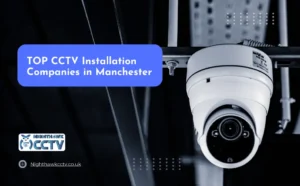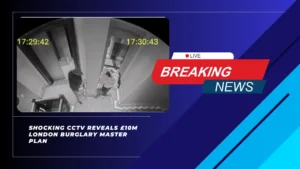Can I Request CCTV Footage of an Accident?
Did you know that CCTV footage is typically deleted after just 30 days? If you’re wondering “can I request CCTV footage of an accident,” the answer is yes – but you need to act fast.
Here’s why this matters: CCTV footage provides irrefutable proof about accident circumstances, unlike potentially unreliable eyewitness accounts. Furthermore, with personal injury compensation potentially reaching £750,000 or more, securing this crucial evidence could make or break your case.
Importantly, under the Data Protection Act 2018, you have the legal right to request CCTV footage of yourself, and it must be provided free of charge within 30 days.
However, navigating this process can be tricky, especially when dealing with different types of camera systems – from public council-operated cameras to private business surveillance.
We’ll guide you through the exact steps to request CCTV footage, explain your legal rights, and show you how to handle potential obstacles along the way.
Let’s ensure you get the evidence you need before it’s too late.
Getting CCTV footage after an accident requires a systematic approach. Accordingly, we’ve broken down the process into five essential stages that anyone can follow.
Here are the main steps we’ll cover in detail:
- Understanding Your Legal Rights: Learn about data protection laws and time limits
- Locating Relevant Cameras: Find and map potential footage sources
- Submitting Your Request: Master the documentation process
- Handling Rejections: Know what to do if denied
- Using the Footage: Learn proper handling and legal uses
Generally, success in obtaining CCTV footage depends on quick action and proper procedure. Moreover, while the process might seem complex at first, breaking it down into manageable steps makes it more approachable.
Throughout this guide, we’ll share practical tips from our experience helping people request CCTV footage of accidents. Subsequently, you’ll learn not just the basic steps, but also insider techniques that increase your chances of success.
One crucial point to remember is that different organizations have varying procedures for handling CCTV footage requests. Some might require specific forms, others accept email requests, and certain entities might need formal legal notices. Throughout this guide, we’ll address each scenario to ensure you’re well-prepared.
As we move forward, you’ll discover exactly what documentation you need, who to contact, and how to phrase your requests effectively. Additionally, we’ll provide templates and examples to make the process as straightforward as possible.
Remember, while requesting CCTV footage might seem daunting, it’s your right to access this valuable evidence. Our step-by-step approach will help ensure you don’t miss any crucial details in the process.
Understanding Your Legal Right to Request CCTV Footage
Let’s explore your legal rights regarding CCTV footage requests. Indeed, understanding these rights is crucial for a successful request.
Data Protection Laws and CCTV Access
Under the Data Protection Act 2018, we have the right to request CCTV footage of ourselves. Primarily, this means you can ask for any recordings where you appear, through what’s known as a Subject Access Request (SAR).
Here are the essential requirements for making a valid request:
- Proof of your identity
- Specific date and time of the incident
- A clear description of yourself
- Location where the footage was recorded
Time Limits for Footage Retention
Timing is absolutely critical. Most CCTV systems automatically delete footage after 30 days. Nevertheless, there are exceptions for specific circumstances. For instance, footage related to:
- Personal injury cases must be kept for 3 years and 4 months
- Death in custody investigations requires 6-year retention
Privacy Considerations and Restrictions
Although you have the right to request footage, certain restrictions apply. Specifically, your request might be denied if:
- Other people are identifiable in the footage
- The CCTV owner cannot edit out others to protect their privacy
- The footage could compromise an ongoing criminal investigation
The Information Commissioner’s Office (ICO) requires CCTV operators to register their systems and pay a data protection fee. Consequently, this ensures proper management of surveillance systems and protects individual privacy rights.
For workplace CCTV, employers must inform staff about monitoring through clear signage. The footage should only be used for its intended purpose – for example, if installed for security, it cannot be used to monitor employee productivity.
Remember, CCTV owners must respond to valid requests within one calendar month. Furthermore, they typically cannot charge you for providing the footage.
Locating Relevant CCTV Cameras
Initially, finding the right CCTV cameras that captured your accident requires strategic planning and thorough investigation. Let’s explore where to look and how to document potential footage sources.
Common CCTV Locations for Accident Coverage
Security cameras are strategically placed in numerous locations where accidents commonly occur.
We’ve identified these key areas to check:
- Public car parks and major roads
- Supermarket parking areas
- High streets and busy intersections
- Business premises exteriors
- Multi-story parking facilities
- Private properties near the accident site
Identifying Camera Owners
Primarily, the owner’s details are typically displayed on signs attached to the camera.
In situations where ownership isn’t immediately obvious, we recommend:
- Looking for visible signage near the camera
- Contacting the nearest business or property
- Reaching out to local authorities if the camera is on public property
To help camera owners identify your footage, prepare these essential details:
- Exact time and date of the accident
- Your vehicle’s registration, make, model, and color
- Personal identification proof
Creating a Camera Location Map
Therefore, documenting camera locations systematically increases our chances of securing valuable footage. The mapping process involves identifying cameras that might have captured the incident from different angles.
As a result of proper mapping, we can:
- Determine the exact coverage area of each camera
- Understand which parts of the accident scene were under surveillance
- Identify potential blind spots or obstacles
One crucial point to note: most city centers in the UK have extensive camera networks, including both traffic management and community safety systems. Through strategic mapping, we can identify cameras that offer the best view of the accident scene.
Remember that some cameras have rotate and zoom capabilities, which means they might have captured your accident even if they weren’t directly pointing at the scene at all times. In fact, studies show that existing traffic management camera systems can potentially record approximately 25% of accidents in their coverage area.
Submitting a Proper CCTV Footage Request
First and foremost, submitting a proper CCTV footage request requires careful attention to detail and following specific procedures. We’ll guide you through each step to ensure your request gets processed promptly.
Required Documentation and Forms
To submit a valid CCTV footage request, we need to prepare several essential documents. A complete request package should include:
- Valid photo identification (passport or driver’s license)
- Proof of address dated within last 3 months
- Recent full-face photograph
- Completed CCTV request form
- Details about the incident location and timing
Writing an Effective Request Letter
In addition to the required documentation, writing a clear request letter is crucial. Your letter should contain:
- Purpose of requesting the footage
- Specific date and time of the incident
- Location details with landmarks
- Your contact information
- Vehicle descriptions (if applicable)
- Any relevant police report numbers
Notably, avoid including unnecessary information about customer service complaints or using threatening language. Instead, focus on presenting your request professionally and concisely.
Following Up on Your Request
Once submitted, organizations must process your request within one calendar month. Simultaneously, it’s important to understand that most CCTV footage is automatically deleted after 30 days.
To maximize your chances of success:
- Submit your request within 26 days of the incident
- Keep copies of all correspondence
- Note down any reference numbers provided
- Follow up politely if you haven’t received a response within two weeks
The CCTV owner might invite you for a viewing if they cannot provide the footage directly. Under certain circumstances, they may need to edit the footage to protect others’ privacy.
Remember that speculative requests without specific details will not be processed. Hence, providing accurate information about the incident is paramount for a successful request.
Dealing with Request Rejections
Sometimes, despite our best efforts, CCTV footage requests get rejected. Primarily, understanding why this happens and knowing how to respond can make all the difference in eventually obtaining the evidence we need.
Common Reasons for Denial
Organizations might refuse our CCTV footage request for several legitimate reasons:
- Other people are identifiable in the footage
- Technical inability to edit out others’ identities
- Risk to ongoing criminal investigations
- Concerns about prejudice or harm to other individuals
- Missing proper photo identification
Alternative Solutions
Given a rejection, we have several options to pursue. In the event that our initial request is unsuccessful, we should:
- Review the rejection reason carefully
- Supply any missing documentation
- Submit a modified request addressing their concerns
- Request a viewing of the footage rather than a copy
Notably, if the organization fails to respond within one calendar month, we should send a reminder letter setting a reasonable deadline of 7-14 days.
Escalation Procedures
Important to realize, we have the right to challenge rejected requests through proper channels. Here’s our recommended escalation process:
First, file an internal complaint with the organization. Organizations must have a complaints procedure for handling disputed requests. During this stage, clearly explain why we believe the rejection was incorrect.
Certainly, if the internal complaint doesn’t resolve the issue, we can escalate to the Information Commissioner’s Office (ICO). The ICO can:
- Investigate our claim
- Issue legally binding decision notices
- Order the organization to disclose footage if appropriate
- Take action against those who misuse personal data
The ICO typically resolves complaints informally at first. In fact, many cases reach a satisfactory compromise through this process. Organizations have 35 calendar days to comply with any ICO decision notice.
Remember that persistence often pays off. As opposed to giving up after an initial rejection, following these structured escalation procedures significantly improves our chances of success.
Using CCTV Footage Effectively
Properly handling CCTV footage once obtained is crucial for its effectiveness as evidence. Studies show that over 80% of CCTV pictures are often too poor in quality for police purposes, making proper preservation and handling essential.
Evidence Preservation Methods
Primarily, we need to create both a Master copy and Working copies of the footage. Here’s our recommended preservation process:
- Store the Master copy in its native format
- Create a bit-for-bit Working copy for analysis
- Document any format conversions clearly
- Verify playback on different devices
- Record associated metadata and time stamps
Legal Uses and Limitations
Notably, CCTV footage serves as a silent, impartial witness in accident cases. We can use this evidence to:
- Calculate vehicle speeds through expert analysis
- Establish exact accident sequences
- Reconstruct events with specialist skills
- Determine visibility factors in accidents
Undoubtedly, some limitations exist when using CCTV footage. The footage might be inadmissible if it shows third parties who cannot be edited out. Similarly, footage quality issues might require expert enhancement for court use.
Sharing with Insurance Companies
Afterward, sharing footage with insurance companies requires careful consideration. Expert analysis companies can help:
- Position vehicles accurately
- Determine speed calculations
- Establish driver visibility
- Analyze contributing factors
When sharing with insurers, we must maintain the footage’s chain of custody. The evidence can significantly expedite claim settlements.
One crucial consideration: footage analysis might reveal both parties contributed to the accident. In such cases, the footage helps determine the percentage of responsibility for each party.
Remember to check the footage quality before submitting it as evidence. Poor quality recordings might need enhancement or expert analysis to be useful. Markedly, scientific analysis can reveal details beyond what’s immediately visible in the footage.
Conclusion
Requesting CCTV footage after an accident demands quick action and careful attention to detail. While the process might seem complex, following our structured approach significantly increases chances of success.
Remember these critical points: Act within 30 days before footage deletion, gather proper documentation, and submit a clear, detailed request. Should rejections occur, persistence through proper escalation channels often yields results.
Most importantly, proper handling of obtained footage proves essential for its effectiveness as evidence. Expert analysis can reveal crucial details that might not be immediately visible, making CCTV footage a powerful tool for accident claims and legal proceedings.
We believe knowledge empowers action. Armed with this comprehensive guide, you now have everything needed to secure vital CCTV evidence after an accident. Take immediate steps after any incident – time remains your biggest constraint in this process.




